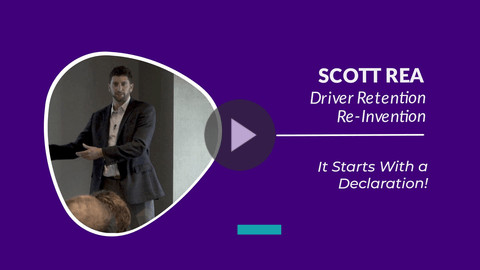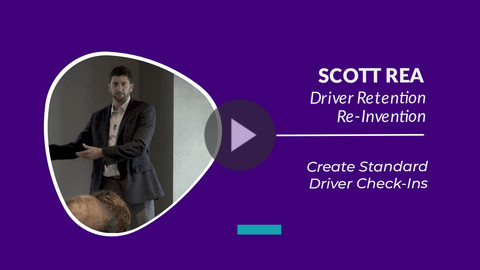Why Does Driver Retention Matter?
Before COVID-19, unemployment rates were at record lows – drivers had the leverage in the supply and demand equation. In the middle of the pandemic, people are grateful to have jobs and especially grateful to have an employer who puts their safety first. So with COVID-19, why should you care about driver retention? Everyone should stop whining and be grateful that they have a job, right? I hate whiners so you’re half right. But if you let the macroeconomic labor pool dictate your success, you’ll only improve driver retention when your revenue is down. That’s a poor way to attract and keep your best drivers. That approach makes you a jellyfish floating with the ocean current, with no control on your destiny. It’s frankly un-American.
The American Trucking Association has long documented that as freight demand decreases, so does driver turnover, because the majority of trucking companies are jellyfish riding the tide. The economy will eventually open up and you will start moving more freight again. Drivers will look back at the last two months and evaluate how you treated them during a time of crisis. Did you show drivers you have their back or did you just focus on the business? It was a wild few months. You needed to scramble to find new customers, secure loans, and make hard decisions. We went through it too. Did you take advantage of this opportunity to create a driver for life? Or did your lack of actions show your team that they should just be grateful to have a job?
It IS Possible to Improve Driver Retention
COVID-19 or not, drivers constantly quit one company to go work for another. The irony is, they don’t quit to work for better pay, better treatment, or even better hometime. They take virtually the same job. And, they don’t leave a company for the reasons you might think.
There’s tons of reasons that drivers quit, but most of them come down to how drivers are treated. They don’t only quit over pay and hometime discrepancies; drivers quit because they aren’t shown respect or appreciation. Since drivers quit to work for virtually the same company, small improvements in how you treat your drivers will go a long way towards improving retention. Yes, the entire industry faces the same problem, but it’s for that very reason that you can gain so much from addressing it.
The First Three Steps
Building and sustaining a driver-centric culture is a long road. You need to make a plan and stick to it. You need buy-in throughout the company. You need to dedicate time to it. More than anything, though, you need to stop plugging leaks with more drivers and get to the source of the problem. Here are three ways to start:
- Make a Declaration from the top to the bottom of your company. Change starts at the top because people do what their boss inspects and measures. In other words, your employees will do what they think you care about. Make it clear across your leadership team that driver retention and driver treatment are of the greatest importance. A great way to do so is to assign driver retention performance evaluation to the highest possible executive in the company. This shows that you’re serious and it’s not the flavor of the month.
- Set retention KPIs that affect executive bonus pools and dispatcher/recruiter compensation. This sends the message that driver retention is everyone’s job. Plus, it rewards employees who go above and beyond for your drivers.
- Create a regimented check-in process that proactively gets in front of your drivers. Spread the check-ins across every department. Give your dispatchers, payroll clerks, and managers specific call scripts to their respective roles. These only have to be five minute check ins – the key is to remain proactive. Generally speaking, drivers and employees don’t bring up every little thing. Until that little thing is the straw that breaks the camel’s back. Be proactive. Prevent those straws from piling up.
To get a sneak peek of the National Recruiting and Retention presentation in October, sign up for a complimentary one-hour webinar where I’ll be joined by fellow NRR speakers Joel Mandelbaum, the author of best-selling marketing book Winning Online, Increase Your Visibility and Crush Your Competition and Council Atlantic executive and retention expert, Kelly Henderson. Tune in and we’ll share some of our strategies for implementing a successful retention plan that can work for you.




